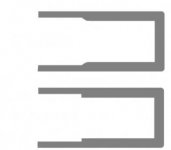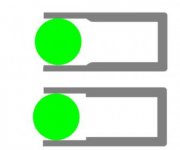Some good information so far in here, and to point you in the right direction, what you want to do is covered on page 125 of the full manual linked by Limy Sami. A configuration like that (tapered or straight) will work as long as the ball seats against the shoulder, the o-ring is squeezed, and the volume available to the o-ring is somewhat greater than the gap between the ball and the wall.
The issue you can see right away based on Parker manual, page 125 is that in either direction, once the ball moves away from the seated position but the seal hasn't been broken, the o-ring will get blown out of position. To retain it, some care will need to be taken in groove design. This is based on (differential) pressure, pressure direction, o-ring durometer, and fluid to be sealed, none of which you have shared here. "Gasproof" as ambiguous since it could refer to liquid fuels or any variety of gasses.
More general information:
- Sharp corners are generally no-nos. They tend to cut o-rings even if you don't expect it to. They move around under pressure more than you might think.
- Permanent deformation happens in all situations and all designs. The degree of such is based on the rubber compound, the temperature, time, and deformation. Effective designs are those that can tolerate some amount of permanent deformation. 25% of the applied squeeze becoming permanent is typical.
Edit to add re: copper seals, typically copper will be used in specialty applications like pulling hard vacuum where it is unacceptable to have even the small amount of seepage rubber will allow through the material. It requires special groove and flange design and typically needs loads and loads of loading, like bolts every inch or two. Not something you're likely to make effective by tossing a ball towards it under pressure and hoping for the best.







